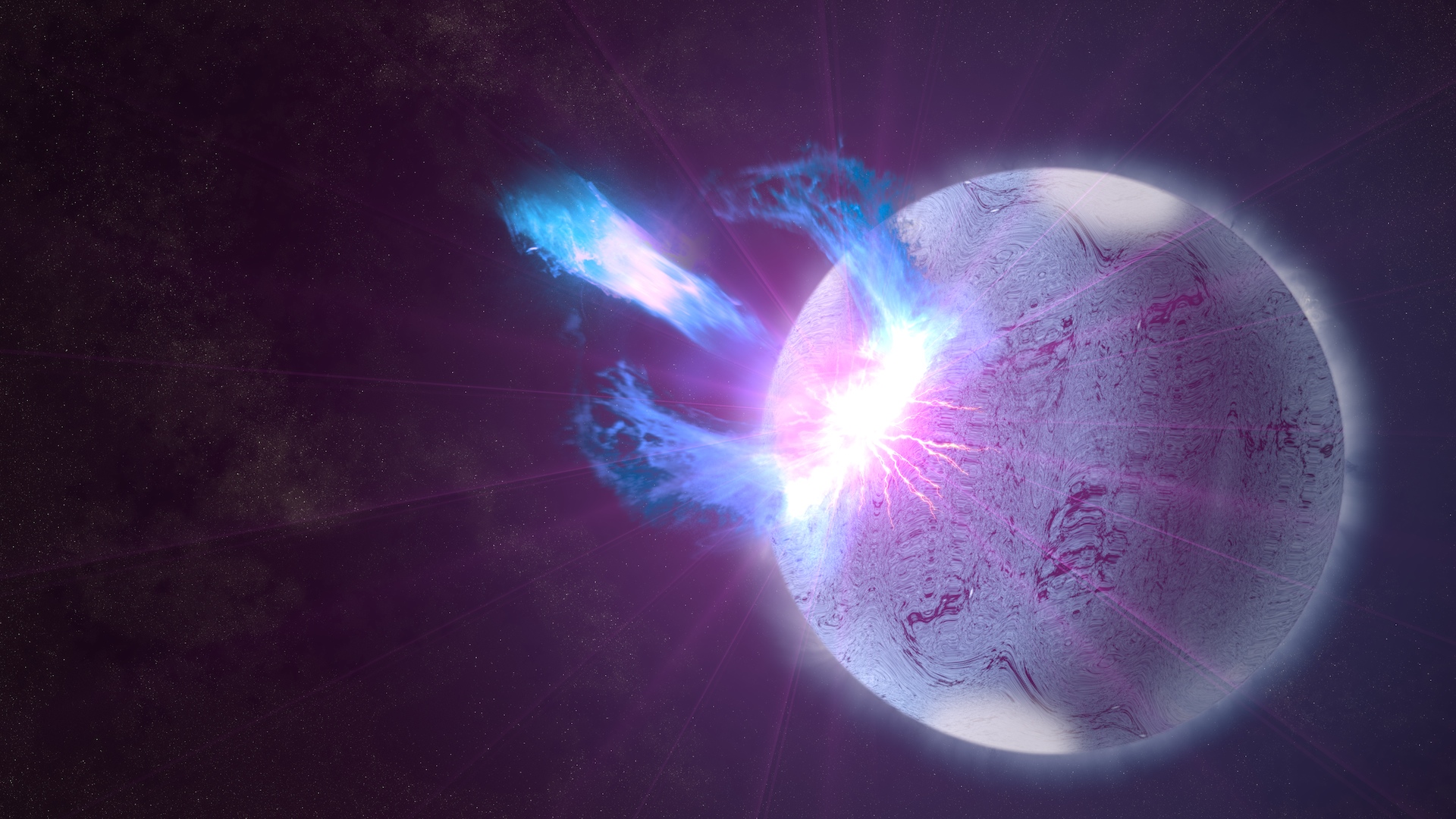Recently astronomers have been able to associate two seemingly unrelated phenomena: an explosive event known as a fast radio burst and the change in speed of a spinning magnetar. And now new research suggests that the cause of both of these is the destruction of an asteroid by a magnetar.
For years astronomers were stumped by the origins of fast radio bursts, which are flashes of radio energy that last less than a second. Since fast radio bursts were detected in distant galaxies, they must be incredibly energetic events. But it wasn’t until astronomers caught a fast radio burst occurring in our own galaxy that we discovered the likely culprit: magnetars.
Magnetars are a special kind of pulsar, which are rapidly spinning neutron stars. When neutron stars first form, they can carry with them enormously strong magnetic fields – the strongest magnetic fields in the entire universe. And so these super-magnetized neutron stars get a new name: magnetars.
The connection to fast radio bursts was made when astronomers noted noticed a magnetar glitching. Magnetars rotate with very precise speeds. But occasionally that speed can change suddenly, where it shifts to either a slower or faster speed. Astronomers noticed a glitch in a magnetar around the same time that a fast radio burst was generated. Since magnetars carry enormous amounts of energy, they could potentially explain the origin of fast radio bursts.
But while we knew that these two processes were linked, we didn’t know what led to them. Now in a new research paper, a team of astrophysicists proposed that asteroids have something to do with it.
Asteroids are thought to be common around magnetars. Since magnetars are the leftovers of giant stars after they die, parts of their solar systems will remain intact. And so it’s likely that magnetars are surrounded by a host of asteroids and other assorted debris. In the scenario painted by the researchers, occasionally an asteroid can wander too close to its magnetar. The magnetar, in addition to having a strong magnetic field, also has an extremely powerful gravitational force. If the asteroid gets too close, the gravitational force can rip the asteroid apart.
When the asteroid gets ripped apart its angular momentum has to go somewhere. If it happens to follow a path that goes along with the rotation of the magnetar, then it will increase the speed of the magnetar once it gets disrupted. This causes the glitch. If the asteroid is moving in the opposite direction it will slightly slow down the magnetar, leading to what’s known as an anti-glitch.
Either way the debris of the torn-apart asteroid now gets caught up in the extremely strong magnetic fields. This causes the magnetic fields to tangle up on themselves and release their pent up energy in the form of a fast radio burst.
Lastly, the surviving debris eventually rains down onto the magnetar surface which releases its own kind of flares that we can potentially detect. It is a plausible scenario to explain how exactly magnetars can lead to fast radio bursts, and it shows that even the tiniest objects in a solar system, like asteroids, can lead to very big impacts.

